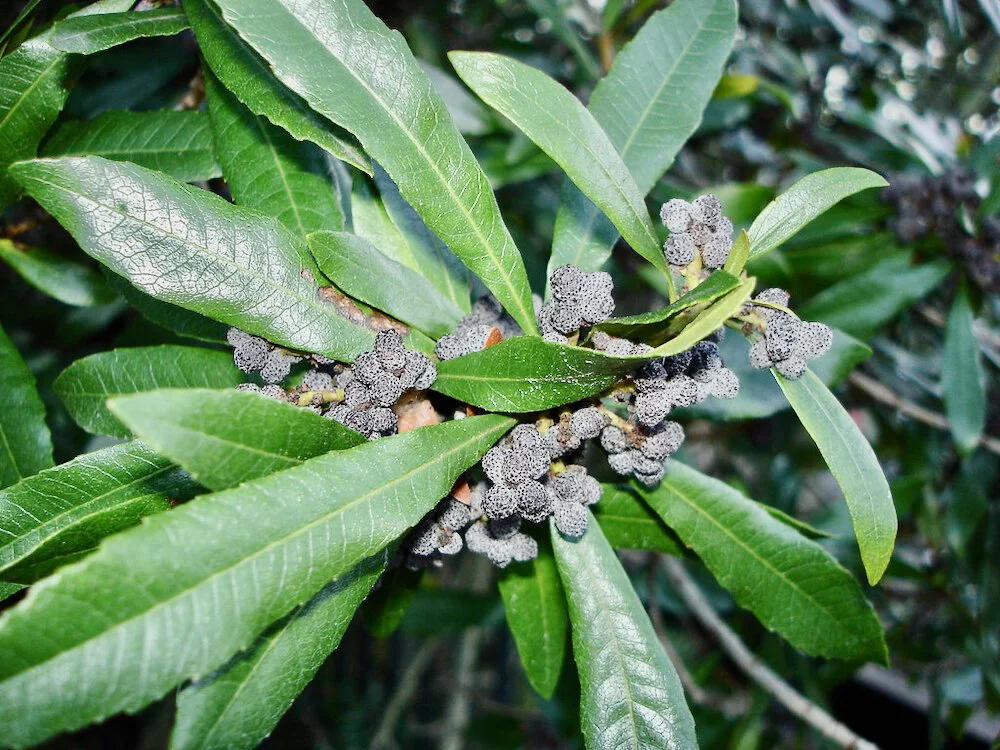Words on Wellness: "California Bayberry"
Walking along the coast this time of year, you may notice the dip and flit of excited yellow-rumped warblers (affectionately referred to as ‘butter butts’) as they feed on the tough indigo berries (and assorted insects) of California bayberry or Pacific Wax Myrtle, Morella californica (still commonly known as Myrica californica). This tall spreading shrub or small tree has a characteristic light grey bark and shiny green leaves that are slightly aromatic when crushed. Also called California myrtle, it’s need to live within site of the ocean and its breezes makes it stand apart from the more common M. communis, also native to North America and used in landscaping. The fruit is eaten by many kinds of birds but only in dainty quantities as it requires special enzymes to break down. The berries have a waxy coating that can be quite thick, in some species like M. cervifera those berries were boiled to make candles with a pleasant aroma. Leaves of myrtle make a slightly spicy tea that is warming for winter and can be blended with other herbs or added to foods in cooking. They are usually gathered in spring and early summer, then dried.
Wax myrtle has so many medicinal uses that in some parts of the country it’s called the miracle bush, a kind of botanical one stop shop that just keeps giving. Settlers followed the indigenous use of the leaves for seasoning and insect repellent and learned the medicinal parts are the root/root bark, which contains a red resin that acts as a vasodilator and astringent to connective tissue. This makes it especially healing for hemorrhoids, sore throats and a mouthwash for red, puffy gums or mouth ulcers. Internally, small doses are used to treat diarrhea or inflammation of the intestines or mucus membranes, heavy menses and uterine prolapse. Also administered for colds, flu, fever and infectious disease, it was made into Thompson’s Compound with white pine, ginger, cayenne and cloves, powdered and added to hot water for tea.
Native wax myrtles are a great choice for the home garden, if you have the space and moist growing conditions. Besides its good medicine, myrtles works well as a tough screen, and also good at fixing nitrogen into the soil – plus the birds in your neighborhood will be ecstatic.





